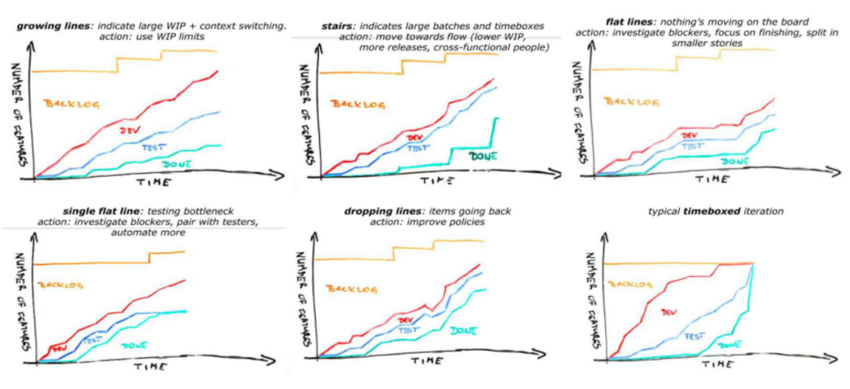Kanban
| Line 34: | Line 34: | ||
Bad Practices - Fields and applications where Kanban does not work | Bad Practices - Fields and applications where Kanban does not work | ||
| + | |||
| + | [[File:cfd6.png|center|thumb|850px||'''Figure 2:''' Example of Kanban Board]] | ||
== '''Limitations''' == | == '''Limitations''' == | ||
Revision as of 18:23, 15 February 2021
Kanban is a systematical approach used to visualize, control and measure the progress of tasks in a project. The word Kanban is rooted from the Japanese language and is the combination of the word “kan” meaning “visual” and “ban” meaning “card”.
Kanban has its origin in the late 1940s when Toyota decided to put its efforts in the development of a production control system with the goal of shortening the time demand from the start to the completion of a process. The Kanban system is a sign-based scheduling system that helped Toyota to improve production efficiency and eliminate waste, establishing the Just-In-Time production system that is a central philosophy of Lean Production Methods. In recent years the concept of Kanban got widely adopted especially as a project management tool for software development, but it can be applied to just about any industry, either process, production or task related.
Following article will first elaborate the concept and ideas behind the Kanban board, and how this system can help to visualize and measure the project performance using certain metrics. Subsequently key application areas and consequential advantages and disadvantages using the Kanban system are investigated. Moreover, the relevance of Kanban in the context of project management is discussed. The conclusion of the article will shade light on the limitations of Kanban and will provide the reader with a step-by-step implementation guide on how the tool can be used to improve project management practices.
Contents |
Big Idea
Board (Columns)
Cards (Tasks)
Metrics to Track Performance (WIP, Lead Time, Cycle Time, Wait Time)
Application
Advantages
Kanban in Project Management
Kanban & Continuous Improvement
Link to other Project Management Tools (SCRUM, ...)
Limitations
Disadvantages
Bad Practices - Fields and applications where Kanban does not work
Limitations
Conclusion
Implementation Step-By-Step Guide
Annotated Bibliography
"A Guide to the Project Management Body of Knowledge (PMBOK® Guide)" - Fundamental resource about the topic of project management. The book includes an "Agile practice Guide" that elaborates in detail on the use of Kanban as a core aspect of agile project management.
"Real-World Kanban: Do Less, Accomplish More with Lean Thinking" - User guide on how to facilitate and establish the correct Kanban system for different teams and applications
"Kanban Change Leadership: Creating a Culture of Continuous Improvement" - Linking the use of Kanban into the context of setting-up a system of continuous improvement for successful change management in an organization

